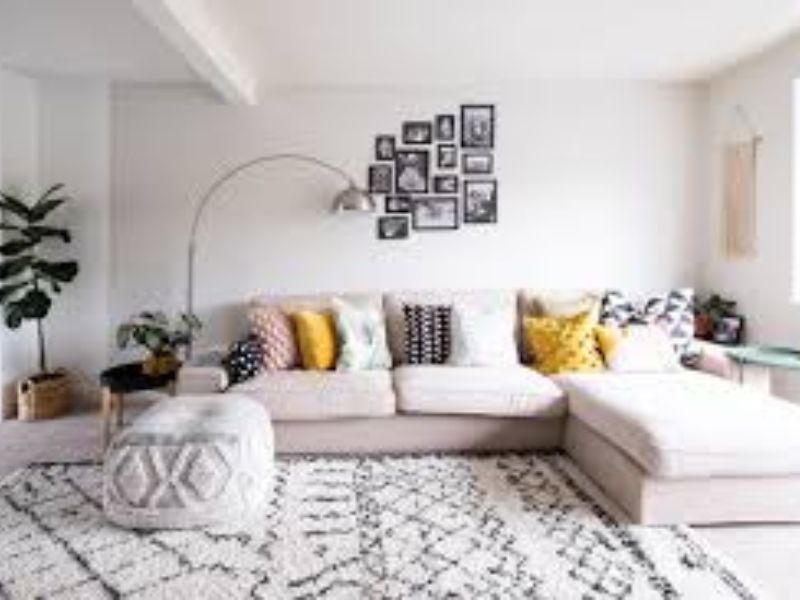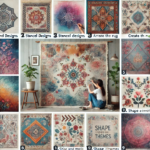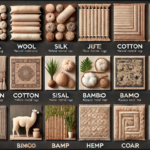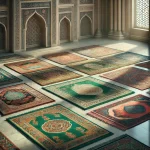Rugs have long been a staple in home decor, providing not only comfort and warmth but also enhancing the aesthetic appeal of any room. Home goods rugs come in a wide variety of styles, materials, and designs, making it possible to find the perfect rug for every living space. Whether you’re looking to add a splash of color, create a cozy atmosphere, or define different areas within a room, choosing the right rug can transform your home. This guide will explore the various types of home goods rugs, their benefits, and tips for selecting the perfect rug for your needs.
Types of Home Goods Rugs
Area Rugs
- Definition: Area rugs are versatile floor coverings that can be used in various spaces within a home, from living rooms to bedrooms.
- Features: Available in a wide range of sizes, colors, and patterns. They can serve as focal points or complementary pieces.
- Benefits: Provide comfort, reduce noise, and protect flooring.
Persian and Oriental Rugs
- Definition: Hand-knotted or hand-woven rugs originating from regions such as Persia (modern-day Iran), Turkey, India, and China.
- Features: Known for their intricate designs, rich colors, and high-quality craftsmanship.
- Benefits: Durable, often considered heirloom pieces that can appreciate in value over time.
Shag Rugs
- Definition: Rugs with a deep, thick pile, often made from materials such as wool, synthetic fibers, or leather.
- Features: Luxuriously soft and fluffy, available in various textures and colors.
- Benefits: Add a cozy, inviting feel to a room, great for bedrooms and living areas.
Runner Rugs
- Definition: Long, narrow rugs typically used in hallways, entryways, or along the sides of beds.
- Features: Available in a variety of styles, from traditional to modern.
- Benefits: Protect high-traffic areas, add style and warmth to otherwise bland spaces.
Outdoor Rugs
- Definition: Rugs designed specifically for outdoor use, made from weather-resistant materials such as polypropylene or synthetic blends.
- Features: Durable, UV-resistant, and easy to clean.
- Benefits: Enhance outdoor living spaces, such as patios and decks, with style and comfort.
Kids’ Rugs
- Definition: Rugs designed for children’s rooms, often featuring playful patterns, bright colors, and educational elements.
- Features: Made from durable, easy-to-clean materials.
- Benefits: Create a fun, engaging environment for children, add warmth and comfort to play areas.
Materials Used in Home Goods Rugs
Wool
- Features: Natural fiber, soft, durable, and insulating.
- Benefits: Resilient, flame-resistant, and naturally stain-resistant.
Cotton
- Features: Soft, breathable, and often used for flat-weave rugs.
- Benefits: Easy to clean, versatile, and affordable.
Synthetic Fibers (Nylon, Polyester, Polypropylene)
- Features: Durable, stain-resistant, and available in various textures.
- Benefits: Affordable, easy to maintain, and resistant to fading.
Silk
- Features: Luxurious, soft, and often used in high-end, intricate designs.
- Benefits: Adds a touch of elegance and sheen, although requires careful maintenance.
Jute and Sisal
- Features: Natural fibers, durable, and often used for rustic, earthy designs.
- Benefits: Environmentally friendly, adds texture and warmth to a room.
Benefits of Using Rugs in Your Home
Comfort and Warmth
- Rugs provide a soft, comfortable surface underfoot, making walking and standing more pleasant, especially on hard floors. They also add warmth, particularly in colder months.
Noise Reduction
- Rugs help absorb sound, reducing noise levels in a home. This is particularly beneficial in multi-story houses or apartments.
Aesthetic Appeal
- Rugs can enhance the visual appeal of a room by adding color, pattern, and texture. They can be used to complement existing decor or serve as a focal point.
Space Definition
- Rugs are an effective way to define different areas within an open-plan space, such as separating a living area from a dining area.
Floor Protection
- Rugs protect floors from wear and tear, especially in high-traffic areas. They can prevent scratches on hardwood floors and reduce the impact of heavy furniture.
Allergen Control
- Contrary to common belief, rugs can help reduce allergens by trapping dust and other particles, which can then be vacuumed up, keeping them out of the air.
Tips for Choosing the Perfect Rug
Determine the Right Size
- Measure your space carefully to ensure the rug fits well within the room. For living rooms, choose a rug that fits under the front legs of your furniture. In dining rooms, the rug should be large enough to accommodate the table and chairs, even when pulled out.
Consider the Room’s Function
- Select a rug that suits the function of the room. For high-traffic areas, choose a durable, easy-to-clean material. For a bedroom, a plush, comfortable rug might be more appropriate.
Choose the Right Material
- Consider the level of traffic and potential for spills when choosing a material. Wool and synthetic fibers are durable and easy to clean, while silk and cotton may require more maintenance.
Select a Style and Pattern
- Think about the overall style of your home and choose a rug that complements it. Traditional patterns work well in classic interiors, while bold, geometric designs are perfect for modern spaces.
Consider Color and Texture
- The color of the rug can set the tone for the entire room. Neutral colors can create a calming atmosphere, while vibrant colors can add energy. Texture also plays a role in the rug’s overall look and feel.
Budget Wisely
- Rugs come in a wide range of prices. Set a budget before you start shopping and look for the best quality within your price range. Remember that a good-quality rug can be a long-term investment.
Maintenance Tips for Home Goods Rugs
Regular Vacuuming
- Vacuum your rug regularly to remove dirt and prevent fibers from becoming matted. Use a vacuum cleaner with adjustable settings to avoid damaging the rug.
Spot Cleaning
- Address spills and stains immediately by blotting with a clean, damp cloth. Avoid rubbing, as this can push the stain deeper into the fibers.
Professional Cleaning
- Consider professional cleaning for deep-cleaning needs, especially for delicate materials like silk or antique rugs.
Rotate Your Rug
- Rotate your rug every few months to ensure even wear and prevent fading from sunlight.
Use Rug Pads
- Use rug pads to keep the rug in place, provide additional cushioning, and protect the floor underneath.
Conclusion
Home goods rugs are more than just floor coverings; they are essential elements of home decor that can enhance the comfort, aesthetics, and functionality of any living space. By understanding the different types of rugs, their materials, and the benefits they offer, you can make an informed decision when choosing the perfect rug for your home. Remember to consider the size, function, material, style, and color to find a rug that fits your needs and complements your decor. With the right rug, you can transform your living space into a warm, inviting, and stylish haven.






